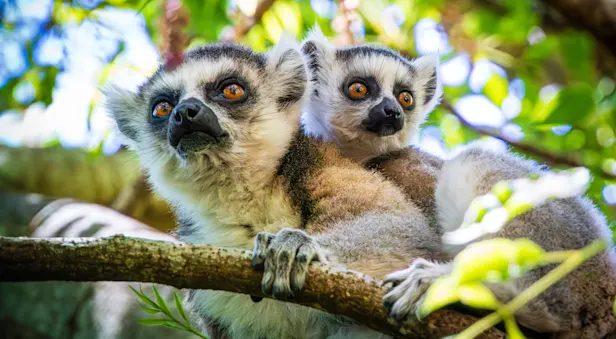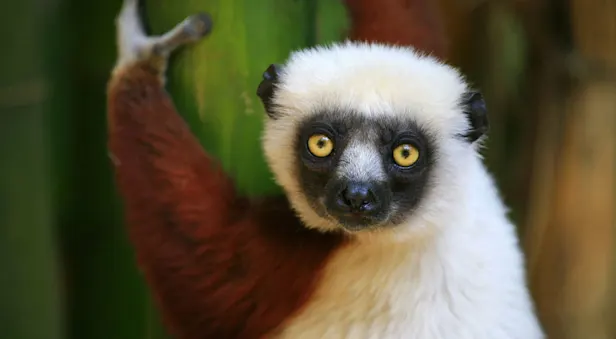Know Before You Go
Nocturnal Lemur Facts | Madagascar Wildlife Guide
While the majority of lemurs are diurnal, there are several species that are nocturnal. The mouse and dwarf lemurs are among the smallest and the most abundant of the island’s primates, although they are likely to be hibernating during our adventure. The small weasel or sportive lemurs are very active during the night, and they are the descendants of a much larger species of lemur that is now extinct. The elusive aye-aye, only recently classified as a lemur at all, is one of the more unusual of the entire lemur family.
EASTERN FORK-MARKED LEMUR
The Eastern fork-marked lemur is found in the temperate coastal forests of northern and western Madagascar and feeds on the gum of deciduous trees. It has become specialized at harvesting this substance because it possesses a “dental comb” of long, forward-pointing lower teeth, which is used to scrape gum that drips from insect holes in trees.
A female’s estrous period lasts only three to four days a year, usually in June, and she gives birth to a single infant between November and December. The offspring eventually emerges from its tree hole home clinging to the stomach of its mother and soon rides on her back before walking on its own.
AYE-AYE
Originally scientists believed the aye-aye to be a squirrel-like rodent and have reclassified it as a lemur in relatively recent times. It is an unusual creature with a disproportionately long and bushy tail, teeth that never stop growing, and ears like those of a bat (so sensitive that it can hear a grub moving under the bark of a tree). It has claws instead of fingernails (except on the great toe), and it has inguinal teats (between its back legs, not on its chest). Perhaps the most extraordinary trait of this lemur, however, is its middle finger.
Most descriptions of the aye-aye say that the middle finger is “greatly elongated.” In fact, it is no longer than the middle finger of other primates, including that of humans. But it is extraordinarily thin—skeletal in fact—and this makes it look longer. The aye-aye also keeps the other fingers crooked up out of the way when working with its most important digit, so its hand looks like a tarantula spider. The thin finger is designed to fit through holes gnawed by insects in tree branches or large nuts (coconuts are a favorite) and draw out the insects inside.
In 1966, when the aye-aye was thought to be on the brink of extinction, nine of these lemurs were released on Nose Mangabe, and they are the ancestors of today’s entire population. The chance of seeing one in the wild continues to improve, though they are still considered to be a rare treat.


























